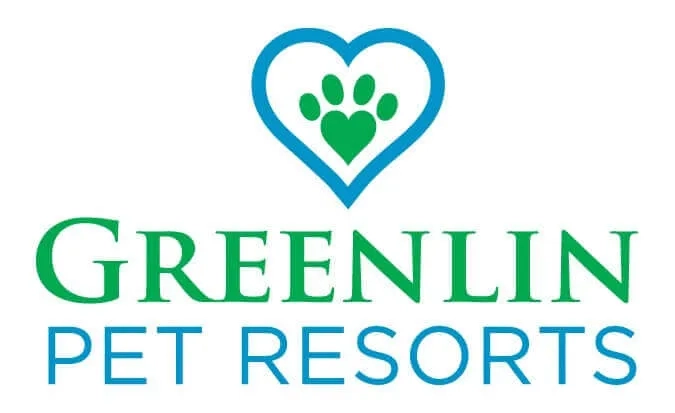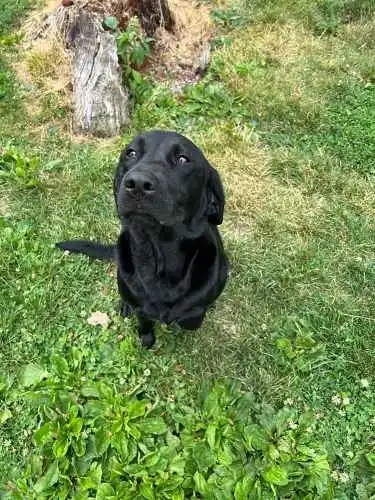Tips for House Training a Newly Adopted Dog
Helping a pup feel comfortable in a new environment can take a while, but house training is the most productive first step to take in order to help your dog feel adapted.
Whether your newly adopted dog is young or old, there is a unique learning curve to house training that’s different for every pup. This can be true even of dogs that have already been housebroken, as a new setting and new routine can introduce confused boundaries.
Starting a new chapter of your life with a new dog is exciting, but being a responsible pet parent will be what makes that excitement last. By house training immediately, you avoid any confusion about certain rules and increase the likelihood of the training making a long-lasting impression.
Your pup may have a hard time understanding that there are certain rules in their new home, but that doesn’t mean you should give up. In fact, with canines, consistency is key!
Greenlin Pet Resorts offers comprehensive dog training classes and has been named “Simply the Best” in Harrisburg for over a decade. Below we’ve outlined some stellar tips for house training a newly adopted dog.
House Training a Rescue Dog
Training an adult rescue dog and a new puppy are similar tasks that both involve patience, consistency, and lots of treats. Remember to create a positive environment for your dog while they are training; that means happy speaking tones, snacks, and belly rubs!
Rescue dogs have a higher chance of developing anxiety or depression, as their previous environment can have been unstable. Inviting them to learn in a safe, calm way will be a proactive method of building their trust throughout training.
With this overall approach in mind, the following tips are the best way to train a rescue dog in order to enhance retention and the quality of the learning environment.
Consistency is Key
Dogs are creatures of habit, so a training session once every blue moon isn’t going to cut it. They should be engaged in training several times a week, and habits instilled through training should be reinforced when possible each and every day.
Training sessions don’t have to be long either, but at least 10 minutes every day will make a huge difference. While the learning curve is different for every dog, utilizing a consistent schedule can help them make gradual progress.
Consistent training includes time strictly set aside for learning commands, with one-on-one attention between your dog and the trainer.
Remember that at the beginning of your training journey, your dog is likely still learning about their new house too.
Keep them in one designated training area, and make the environment as positive and comfortable as possible while reducing the risk of damage to flooring or furniture should there be any mishaps.
Utilize a Crate – Even Temporarily
Crate training doesn’t have to mean incorporating one into daily life, but many dogs see their crate as a safe space to go to when they are threatened, overwhelmed, or tired. It’s also a surefire way to reduce the risk of accidental soiling inside the home.
Crate training can provide stability and avoid multiplying stress during their transition to a new home. Some dogs may object to the process at first, but over time they should be able to view their open crate as a comfortable, personal space they can return to when desired.
Note that crating shouldn’t be used for more than a few hours at a time.
During a dog’s first few months in a home, especially, they should never be confined for a full eight-hour employment shift, for example. Crating overnight or during certain periods of the day can be appropriate, though.
Once your dog has gotten used to crating for an hour or more, they may not need a crate every day, but those learned skills can come in handy later. After an injury or in an emergency, your dog’s crate is where they can safely go to rest and recover.
Praise Goes a Long Way
How long does it take to house train a dog? It depends on the process used.
Positive reinforcement training is one of the most common ways to rapidly train a dog, using praise and other rewards like treats. When your dog successfully completes a command, positive reinforcement calls for rewarding the dog with a treat immediately after.
This training method starts best with treats, but to avoid your new pup gaining unnecessary pounds, transition to verbal rewards and pets once they begin to grasp the point of the command.
Positive reinforcement training works because it’s an easy way to communicate that your dog is doing something right and helps foster a closer relationship between you and your new canine.
Teach Boundaries Early
Dogs are oftentimes fascinated by the environment around them, and they can easily become attached to something you don’t want them to.
Maybe your dog constantly wants to go in a specific room to soil or play with a cherished knickknack, but setting boundaries early could help avoid these problems from the beginning.
You want to especially keep them from having full reign of the home at first, as they may identify certain rooms as “off the beaten path” and, therefore, appropriate for them to defecate in.
It can be hard to say no to an adorable new canine, so set them up for success by showing them what’s not allowed early. Also, restrict their access to rooms that they are more likely to relieve themselves in.
These tactics will help them form an understanding of how their new home functions and prevent any fixation on inconvenient things.
Remove All Reminders of Previous Accidents
A bit of Clorox or a deep wash may be enough for you to forget your dog’s accident, but they’ll still remember. Your canine’s nose can be up to 100,000 times more sensitive than a human’s, so even when you’ve washed their accident off, they might gravitate back to that spot.
The reason your dog goes back to the spot they had an early accident in is that potty time is a self-rewarding behavior, meaning that after potty time your dog gets a natural version of positive reinforcement.
Because of this, it makes sense for your dog to return to their favorite potty spot, so to nip that problem in the bud, you must remove any reminder of their previous accident.
The 3-3-3 Rule: How Long Does it Take to House Train a Dog?
New adoptive pet parents can use the 3-3-3 rule as a guideline for charting their furry friend’s progress while they settle into their new home.
At three days, your dog may still feel overwhelmed, uncomfortable, and skittish. At this stage, they’ll likely be more shy and won’t be showing the full extent of their personality.
Around three weeks, more of your dog’s character will begin to shine through, and they’ll likely start to realize that this is their forever home, too! While they’re likely to still feel unsure of their surroundings, your dog will feel more comfortable exploring at this stage.
Finally, after three months of bonding, your dog should feel settled in and more open to building a close relationship with you as their guardian.
The 3-3-3 rule is a general guideline aimed at helping pet parents gain reassurance about their pet’s progress. It keeps focus on a potential future positive state and lets owners know that things will be especially tough at first, but there’s a light at the end of the tunnel.
Why Is My Newly Adopted Dog Peeing in the House?
Sometimes, efforts to train a pup can be less successful than others. If your dog is urinating in the house even though you’ve spent countless hours training the behavior away, there may be an underlying cause that needs to be addressed.
To enforce that pottying in the house is against the rules, you’ll want to develop a strategy to prevent it from happening. Give them frequent bathroom breaks, and restrict their available territory when unsupervised to a small area or a crate.
Don’t leave them in these confines for more than a few hours at a time, as they may develop an understanding that this is “normal” as opposed to time spent outside or spent indoors with family.
Once you and your new pup get to know each other better, you’ll learn that their expressions give away their upcoming actions. Learn your dog’s body language for finding a place to urinate, and redirect their attention before they can even try.
Read on to learn more about reasons that your dog could be pottying in places they shouldn’t.
To Mark Their Territory
In a new environment, your dog’s first instinct could be to mark their territory. Potty training can be difficult because the act of urinating means something different to dogs than it does to humans.
When you bring a new dog home, this fresh environment doesn’t smell familiar at all. Even though that can be exciting, many dogs will want to give the place their own personal touch.
After you’ve given your dog a nice tour of their new home, be sure to give them enough time outside to go potty before settling in.
Anxiety
Dogs with forms of anxiety, such as separation anxiety, may have frequent urination issues due to their skittish nature.
Anxious peeing typically goes away on its own once your dog starts to feel more comfortable in the house, but an ongoing problem may signal a more serious issue of anxiety. This is common in puppies and older dogs, who have a harder time controlling their bladders.
Excitement/Fear Response
Submissive urination is when a dog unexpectedly urinates due to feeling threatened. If there is a bigger, scarier animal in the house, your dog may have trouble asserting their dominance.
Loud noises and negative reinforcement training strategies can also cause this kind of fear response, which is why it’s seen as a less productive method.
Dogs can also urinate from excitement, which is a different form of submissive urination. This could mean that your dog has trouble regulating their big emotions, and is most common in puppies.
Submissive urination is unique because you are supposed to ignore it, as scolding can make the situation worse, while praise can cause confusion. Submissive urination typically goes away on its own, but if it persists, a veterinarian may be able to offer professional insight.
Exercise and routine can help eliminate nervousness in the home, and exposure to social encounters can reduce over-excitement when meeting new dogs or people.
Greenlin Pet Resorts: The Best Way to Train a Rescue Dog
House training is a journey in itself, but working with a professional can help you see rapid progress in your new furry friend.
At Greenlin pet Resorts, our experienced trainers work with many different doggy personality types and can efficiently tailor a training plan for your unique pup’s needs.
Training starts with basic commands and manners but can evolve to be personalized to your lifestyle as a dog owner. Once your dog has learned basic commands and holds a strong standard of canine etiquette, the sky is the limit for what else they can do!
To learn more about our unique, personalized approach, check out our dog training service page. You can also contact us online with your questions or to schedule your free training evaluation appointment.

